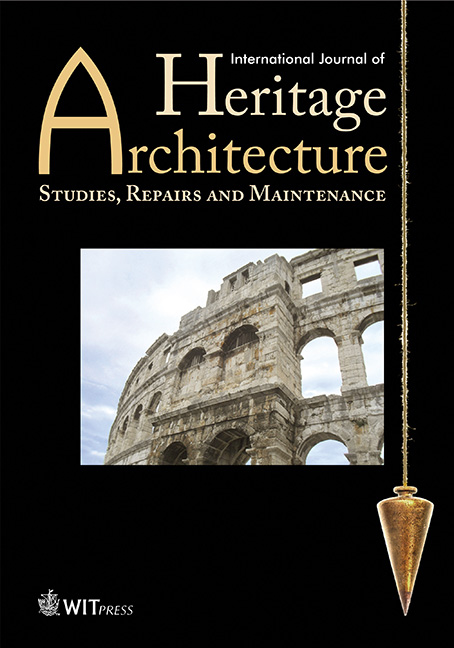Performance assessment of Italian school heritage architecture by non-destructive investigation
Price
Free (open access)
Volume
Volume 1 (2017), Issue 4
Pages
15
Page Range
564 - 579
Paper DOI
10.2495/HA-V1-N4-564-579
Copyright
WIT Press
Author(s)
F. FATIGUSO, M. DE FINO & A. SCIOTI
Abstract
The restoration of Italian school heritage architecture is a crucial domain. This is mainly due to the general conditions of physical obsolescence and lack of maintenance, with relevant impacts at the technical, environmental, social, cultural and economic levels. In particular, the historic school buildings, dating back to the early 20th century, show specific issues, which should be carefully assessed. In detail, they are characterized by combined structural systems, with ‘traditional’ load-bearing masonry walls and foundations and ‘modern’ concrete and iron flooring solutions. They were conceived throughout a few decades, before the concrete framing system developed, following an empirical building practice, where any ‘innovative’ industrial materials used had not been thoroughly tested. Consequently, those buildings generally lack technical records on constructional techniques and technological solutions. Moreover, they have undergone very distinctive decay mechanisms and pathological patterns, related to the interaction between products and systems with incompatible or unpredictable performances. Finally, they require low invasive and compatible interventions, in order to preserve their unique structural and environmental balance, as well as their historical value. Based on some case studies of monumental school buildings in Bari, South Italy, this article discusses the identification methods for concrete and iron flooring systems in historic architecture of the early 20th century, in terms of constructional solutions and most recurring anomalies and pathologies. Furthermore, it focuses on non-destructive diagnostic techniques, as integrated with preliminary historic research, direct survey and comparative analysis with similar cases and technical records. The final goal is to develop some guidelines and tools – databases of building materials and techniques, charts of decay patterns and causes and tables for selection of onsite tests – as decision-making support throughout the pre-diagnosis. Those guide- lines and tools should help identify the actual performances of such building systems and, thus, select the most effective, compatible and long-lasting maintenance solutions, in order to avoid local hazardous situations for vulnerable users.
Keywords
combined structural systems, non-destructive assessment, school heritage




